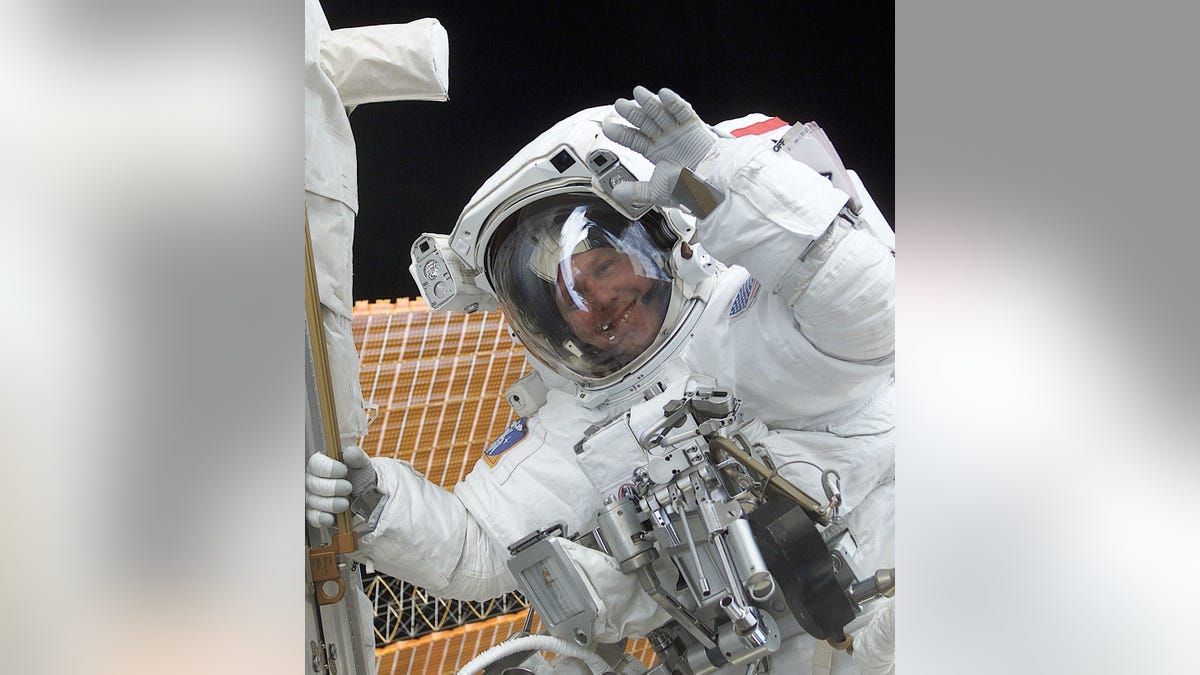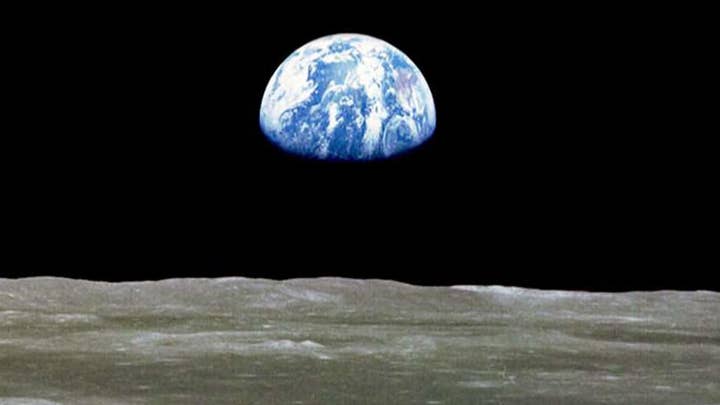Apollo 11 fever grips nation on 50th anniversary of historic lunar mission
From Cape Canaveral to Washington, D.C. and Huntsville, Alabama, Americans are celebrating NASA's out-of-this-world achievement.
The nation’s effort to return American astronauts to the moon is a vital first step toward interplanetary voyages to nearby asteroids and Mars.
Tapping the moon’s resources will prove essential to establishing a human presence elsewhere in our solar system.
By leading the way to the moon and beyond, America will invent new technologies, help secure our national security, boost our economic competitiveness, inspire millions of young people, and rebuild confidence in our society’s ability to meet difficult challenges.
When Apollo 11 reached the moon fifty years ago, it gave the nation a highly visible and long-lasting technological edge which contributed directly to winning the Cold War.
Returning to the moon as part of the larger human exploration of deep space will deliver similar results and stand as evidence of America’s global technological leadership.
Today our leadership in space is precarious at best. The International Space Station (ISS), the current symbol of American space achievement, has only a decade of life remaining.
Meanwhile, a new Chinese space station is headed for orbit next year, and in January China landed its second lunar rover, this time on the moon’s far side.
China plans to reach the moon with human explorers by about 2030. When that happens—and China can certainly do it—America’s absence on the moon will demonstrate to the world that our space and technological abilities are second-rate.
As a nation, we must decide whether to lead the way to deep space or become a footnote in the still-unfolding saga of exploration.
In March, President Trump directed NASA to lead an international effort to return astronauts to the moon by 2024. The agency must speed development of its Orion deep space transport and its powerful new launcher, the Space Launch System.
Together with commercial systems, Orion and the SLS can put us on the moon and start us toward Mars, IF the agency and industry receive the necessary resources.
Numbers show that NASA’s budget has steadily lost buying power for at least 20 years, with its share of the federal budget similarly dropping from 0.8 to 0.47 percent (it peaked at 4.4 percent during Apollo). Yet that decaying budget had to operate the space shuttle, construct an International Space Station, and engineer new deep space systems.

(NASA)
That latter task has suffered, delaying exploration beyond Earth for too long.
Americans have not walked on the moon or even orbited it since 1972. It’s a national embarrassment.
Bold plans must be matched by necessary resources. With a ten percent increase in NASA’s budget, we will not merely repeat Apollo’s brief lunar visits; we will instead build a sustainable, reusable lunar transportation system. We will stay longer, harness the moon’s resources, reuse our spaceships, and prove the machines and skills we will need at Mars.
The 2024 deadline is key to our success at the moon. It’s not that the technical challenges of getting to the moon and back are unsolvable—the Apollo team conquered those.

Lockheed Martin has proposed this lander design to return Americans to the moon in 2024. (Lockheed Martin)
The obstacle today is a lack of urgency: Congress funding space operations “as usual.” For example, Orion and its SLS booster have been under development since 2005, yet the Orion spacecraft has flown just a single 2014 test flight, and its moon-rated booster has yet to fly.
To get on track, we must enlist our space station partners and commercial space firms in returning astronauts to the moon by 2024.
We must advance the testing and flight schedule for Orion and the Space Launch System rocket, launching a first test mission in 2020 and a crewed mission by 2022, and at least two flights per year thereafter.
We must establish the lunar Gateway station in orbit around the moon by 2022. Commercial space firms can help NASA develop this small outpost, along with the piloted landers needed to return Americans to the moon.
Once we return, NASA and its partners must build a lunar science outpost near the moon’s south pole by 2028. There we will test the reusable landers, spacesuits, mining gear, water and rocket fuel plants, and safe nuclear power sources needed for travel to Mars and beyond.
NASA’s plans for returning to the moon are ambitious, but speed is a galvanizing force.
The 2024 deadline has energized the agency and will enlist public and international support.
If, however, we continue the pace of the past fifteen years, by 2030 we will watch a competing space power land its explorers on the moon. Without a sense of urgency, we will lose our technological edge in space and on Earth.
Reigniting the competitive spirit that served us so well during Apollo, we can ensure that Earth-moon space will be open to liberty-loving peoples, democratic ideals, and free markets.
CLICK HERE TO GET THE FOX NEWS APP
Leading a partnership of free, space-faring nations back to the moon within five years will prepare us to reach beyond, to the knowledge and resources waiting at the nearby asteroids and Mars.
Returning to the moon is a vital step on an exciting American journey—let’s again make that “giant leap” we took first in 1969.




